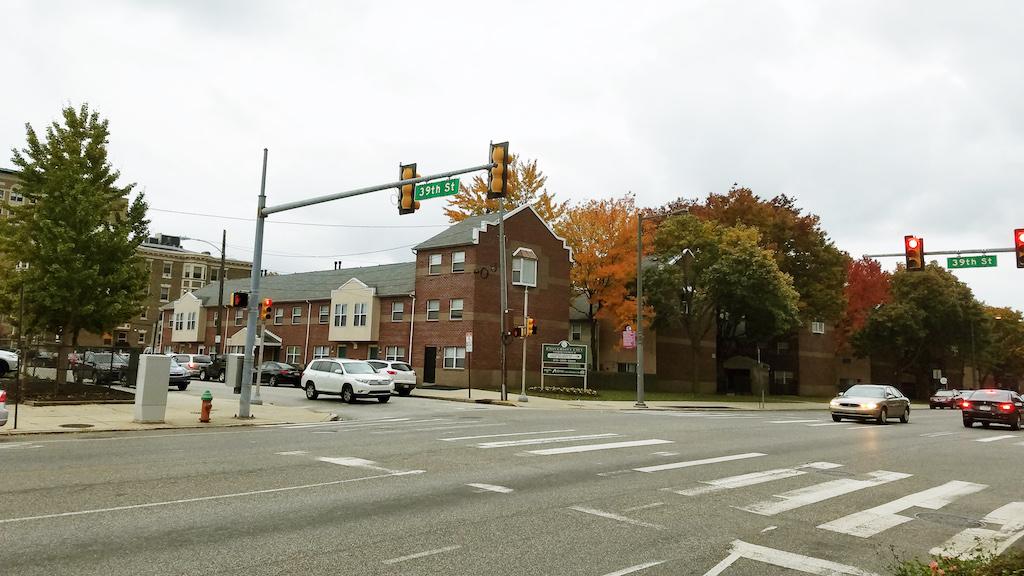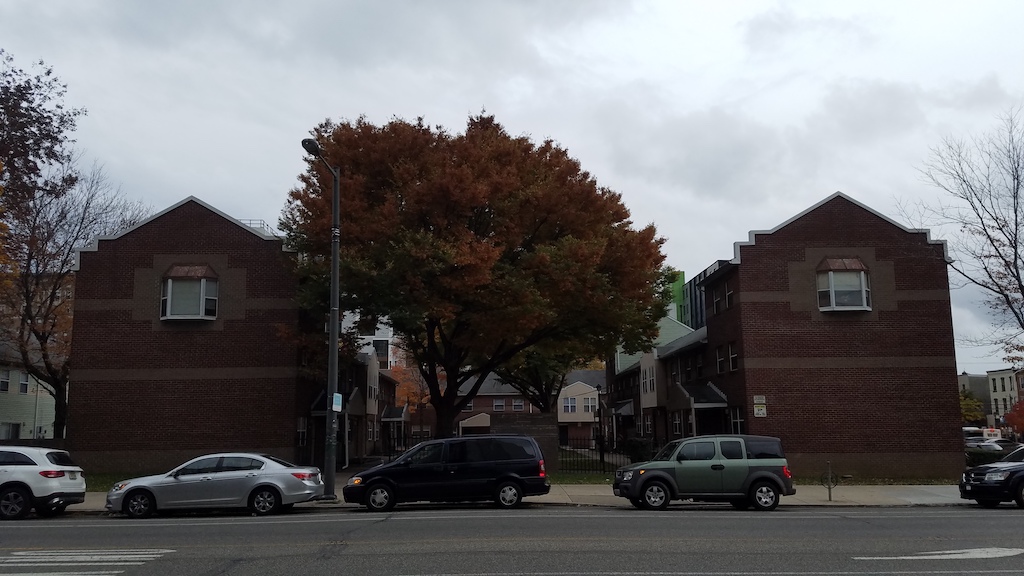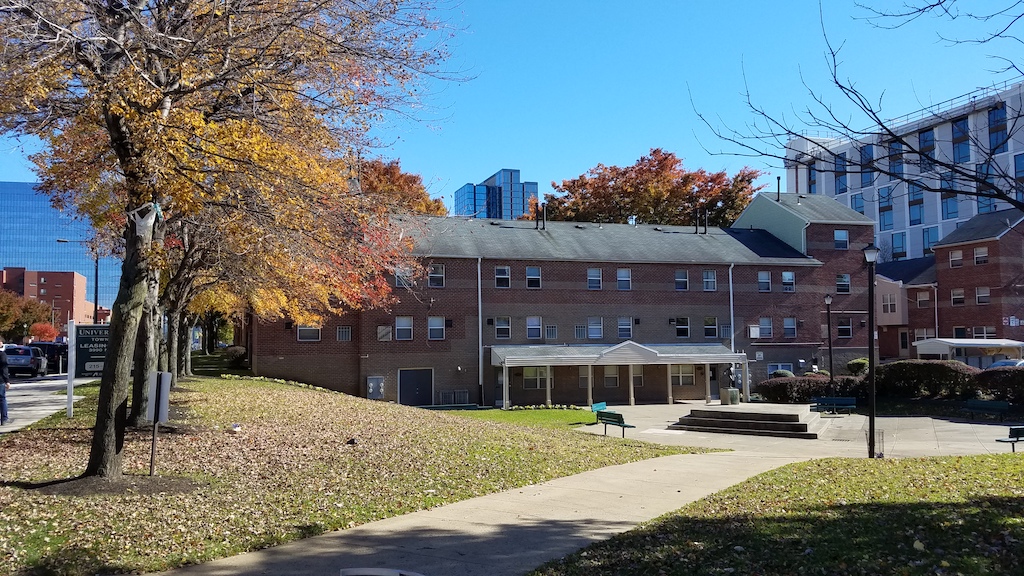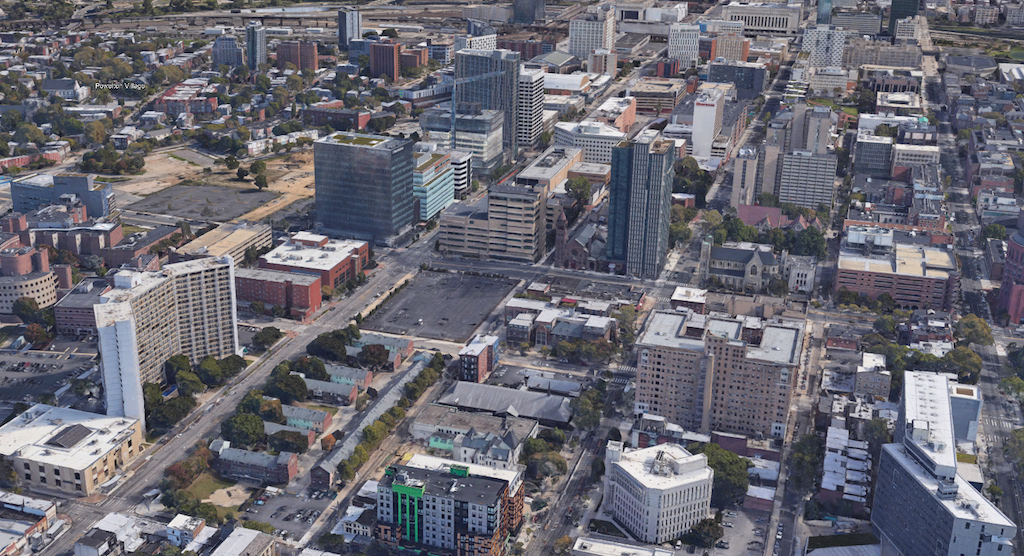Market Street, as the name implies, has served as a commercial corridor in Philadelphia since the days of Billy Penn. Though plenty of residential and institutional uses exist on various blocks of Market Street, commercial or mixed-use are generally the norm. Going west from Front & Market, it takes until 39th Street to find a totally residential use: the 70 garden-apartment style townhomes on the south side of the 3900 block of Market Street. How did these homes get there? And why are they in a location that had commercial uses established for decades before they were built?




Come back in time with us, if you will, to 1970. In February of that year, the University City Science Center placed the massive parcel on the 3900 block of Market Street under the control of the Commission on University-Community Development, an amalgamation of student activists from Penn and several local neighborhood organizations. The Commission was formed in reaction to the acquisition and destruction of thousands of properties by the Redevelopment Authority which built the University City Science Center and the western side of Penn’s campus just a few years prior.
One year later, the Commission dissolved due to its own internal squabbles and the 121K sqft parcel stayed in limbo for nearly a decade until the city re-zoned it for residential use in March 1979 and offered it to HUD as a site for low-income housing. IBID Associates, an entity related to construction firm Altman Brothers (now called Allied Construction Services) proposed a 70-unit federally subsidized development with City support called University City Townhomes. Friday/Richard Kline (now called Friday Architects/Planners Inc), who would go on to design Calcutta House and more recently Paine’s Park, did the design work.
Local business owners were not pleased with this plan. Two local business organizations with similar names, the University City Business Association and the Business Association of University City, led the opposition. They claimed that full residential use was inappropriate for the block and that the site did not meet HUD’s guidelines under a recently-added amendment of the Section 8 New Construction Program of the Housing and Community Development Act of 1974. They sued and the case was heard in Federal court in the fall of 1980.
Though the business organizations lost their Federal Court case (and were denied appeal), they looked for other ways to hold up the development. In August 1981, the two business groups sued Licenses and Inspections, the Zoning Board of Adjustments, IBID Associates, and George Dixon, chief of Permit Issuance. Their reasoning was that over a year had passed since IBID was given a zoning variance, construction had not commenced, and their time to get it started had expired. Once again they lost their case, and once again their appeal was denied.
The University City Townhomes development was finally built and opened to residents in the middle of 1982. In the 36 years since, the development has stood out, strangely out of place along a commercial corridor. Today, the University City Science Center, now called Ucity Square, almost reaches the University City Townhomes and has two mid-rises proposed for its lot across 39th Street from the development. To the west, the proposed Platinum Corridor is set to grow eastward toward the site and Penn Medicine has recently purchased the Elwyn Institute properties on the 4000 and 4100 blocks. Two new mixed-use residential buildings are about to begin construction at the northwest and southwest corners of 40th and Market. The old West Philadelphia Institute building across 40th Street is currently being restored to something close to its Furness design and is being converted to offices and restaurant space.
As Ucity Square, Penn, and Penn Medicine continue to sprawl to the north and west, we wonder whether this parcel might get redeveloped at some point in the future. Given that government dollars were involved in the construction of the University City Townhomes project, it’s possible there are still deed restrictions and other issues that would financially disincentivize the sale and redevelopment of the property. And then there’s the human element, that the redevelopment of this property would leave seventy families looking for a new place to live. The original developers still own and manage the property, so the future of the parcel remains in their hands.
— Dennis Carlisle
If you’re a aficionado of Philadelphia history, current real estate development, and the history of Philadelphia real estate development, join the Dennis Carlisle for his Fishtown Corridors Tour on Wednesday, 11/7, at 6pm! Sign up here: https://bit.ly/2EvQAdd

Leave a Reply